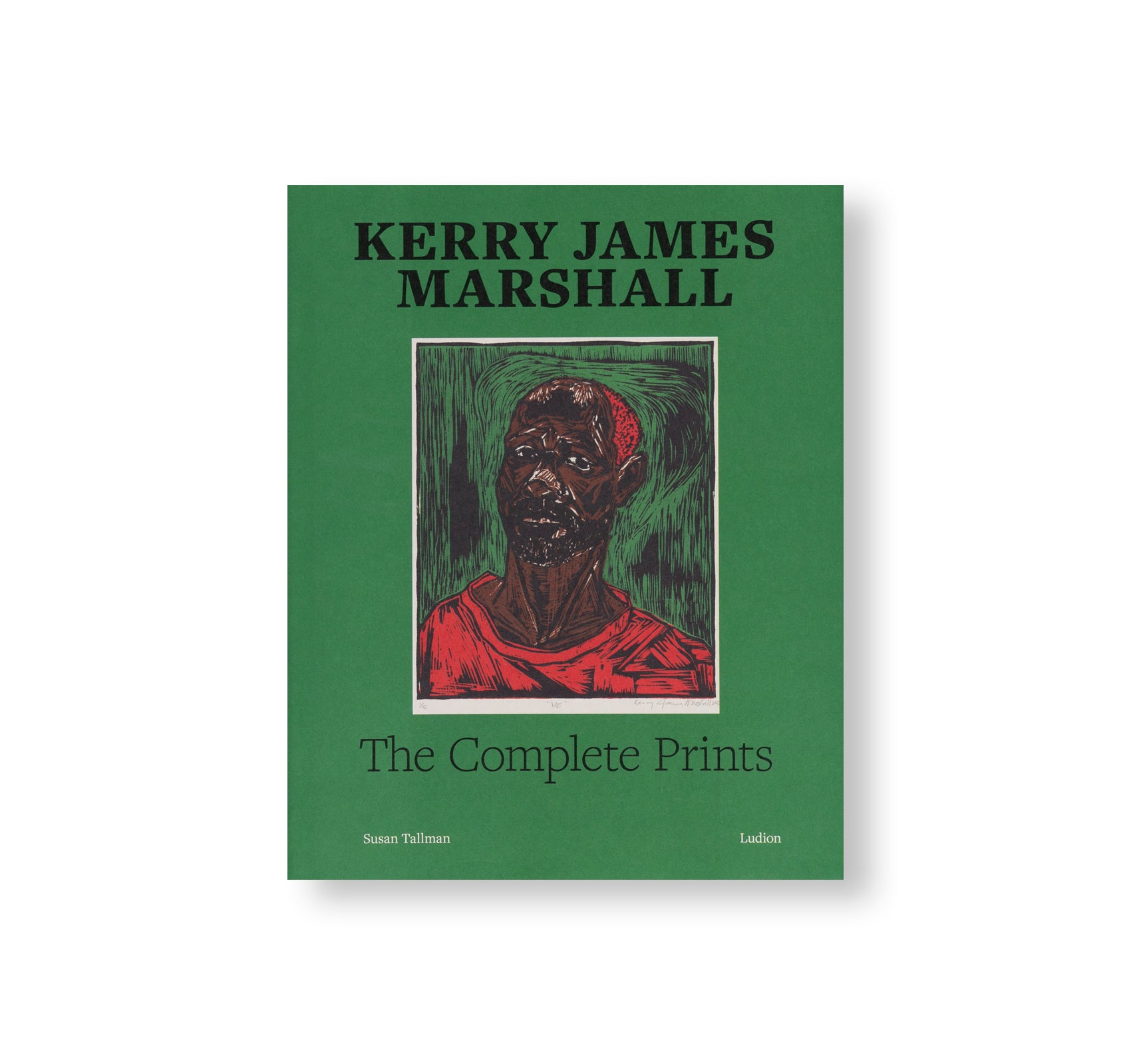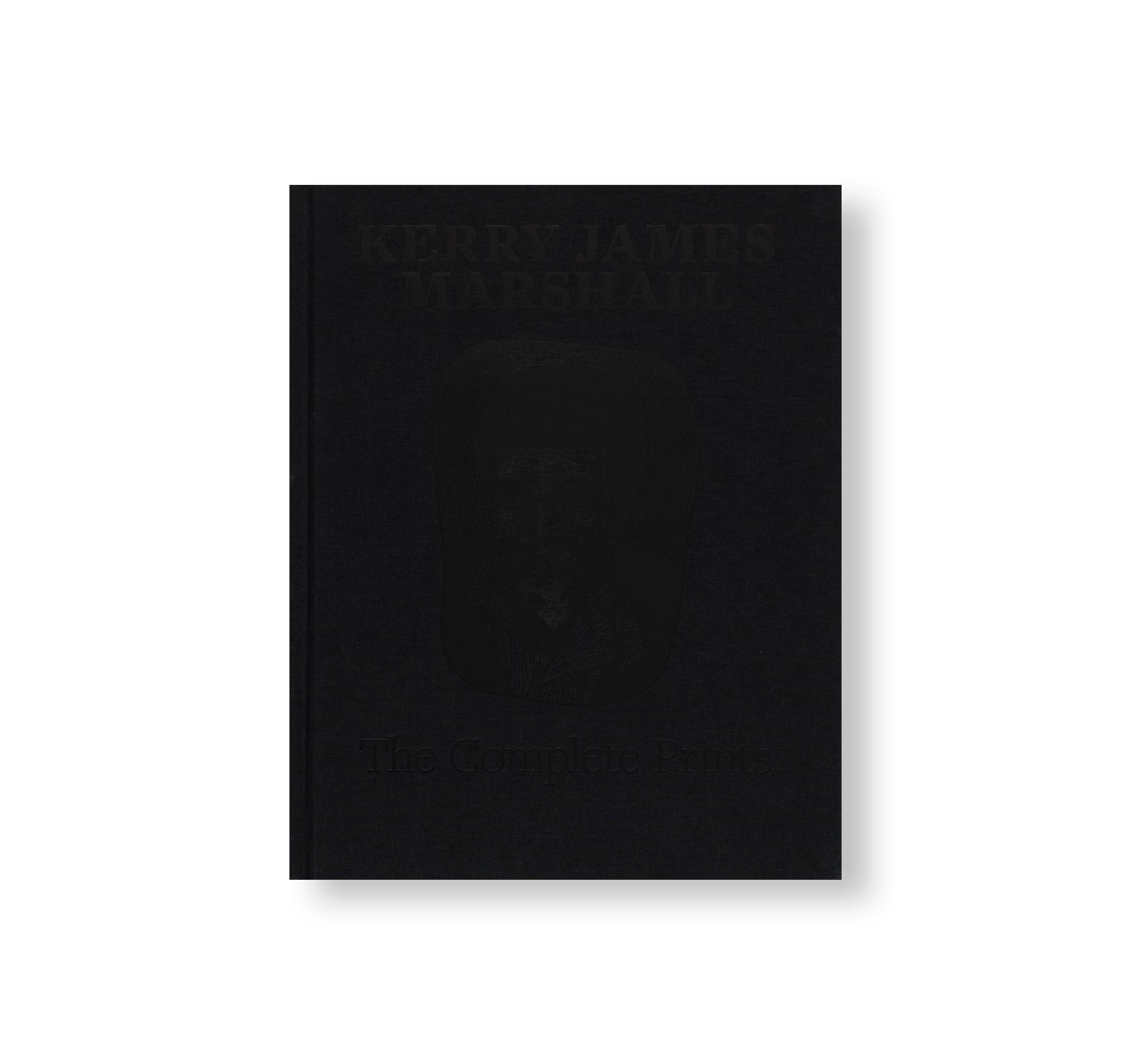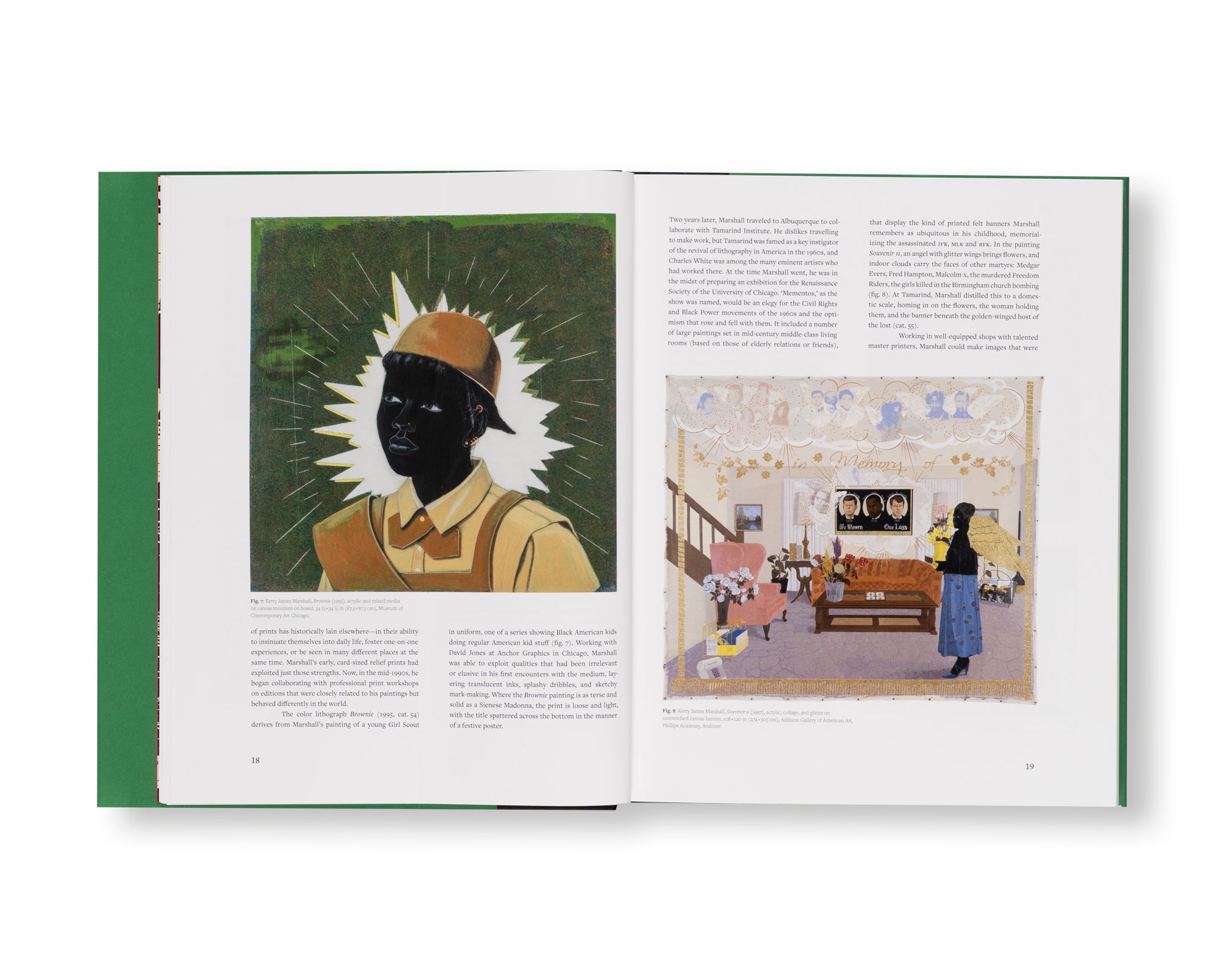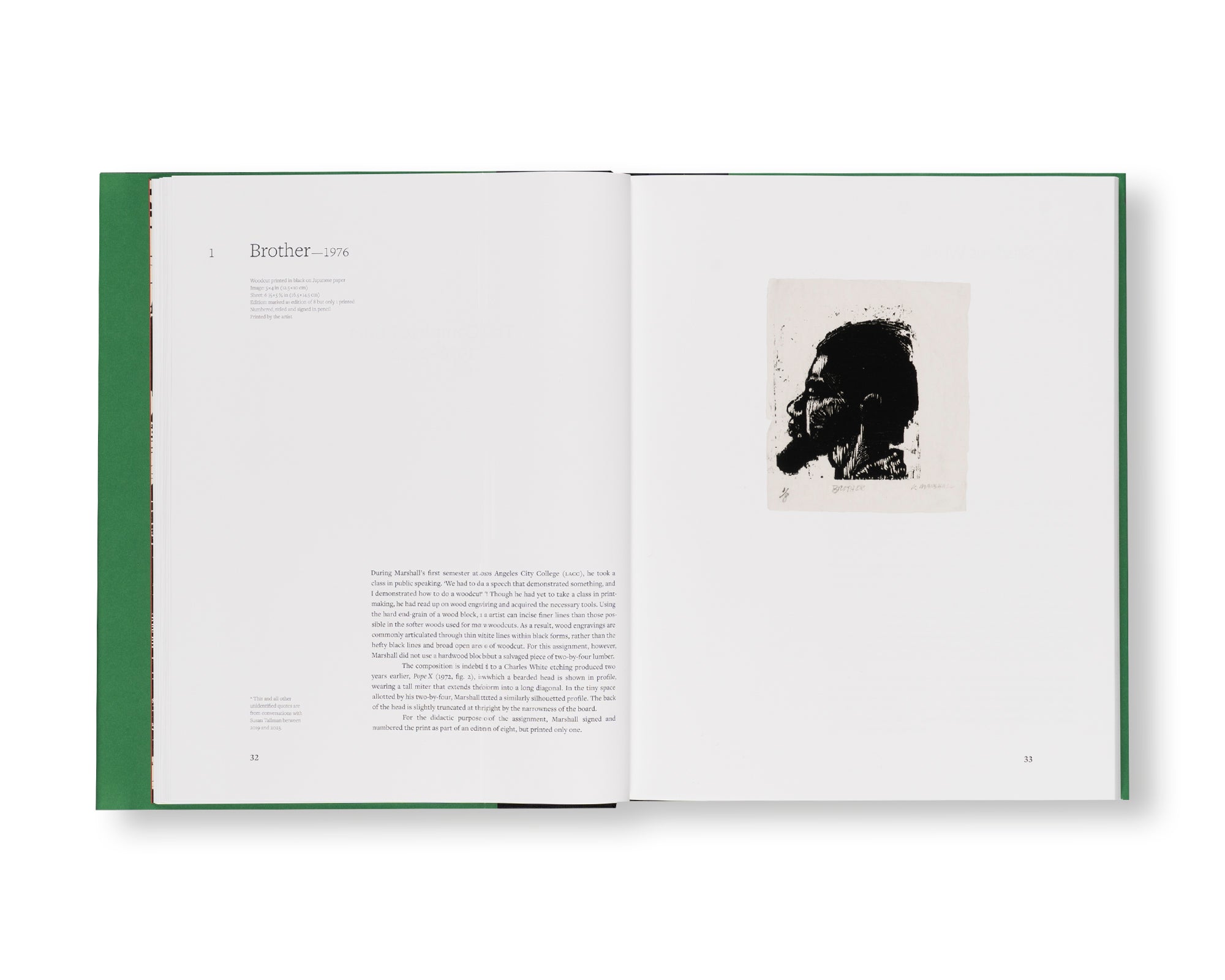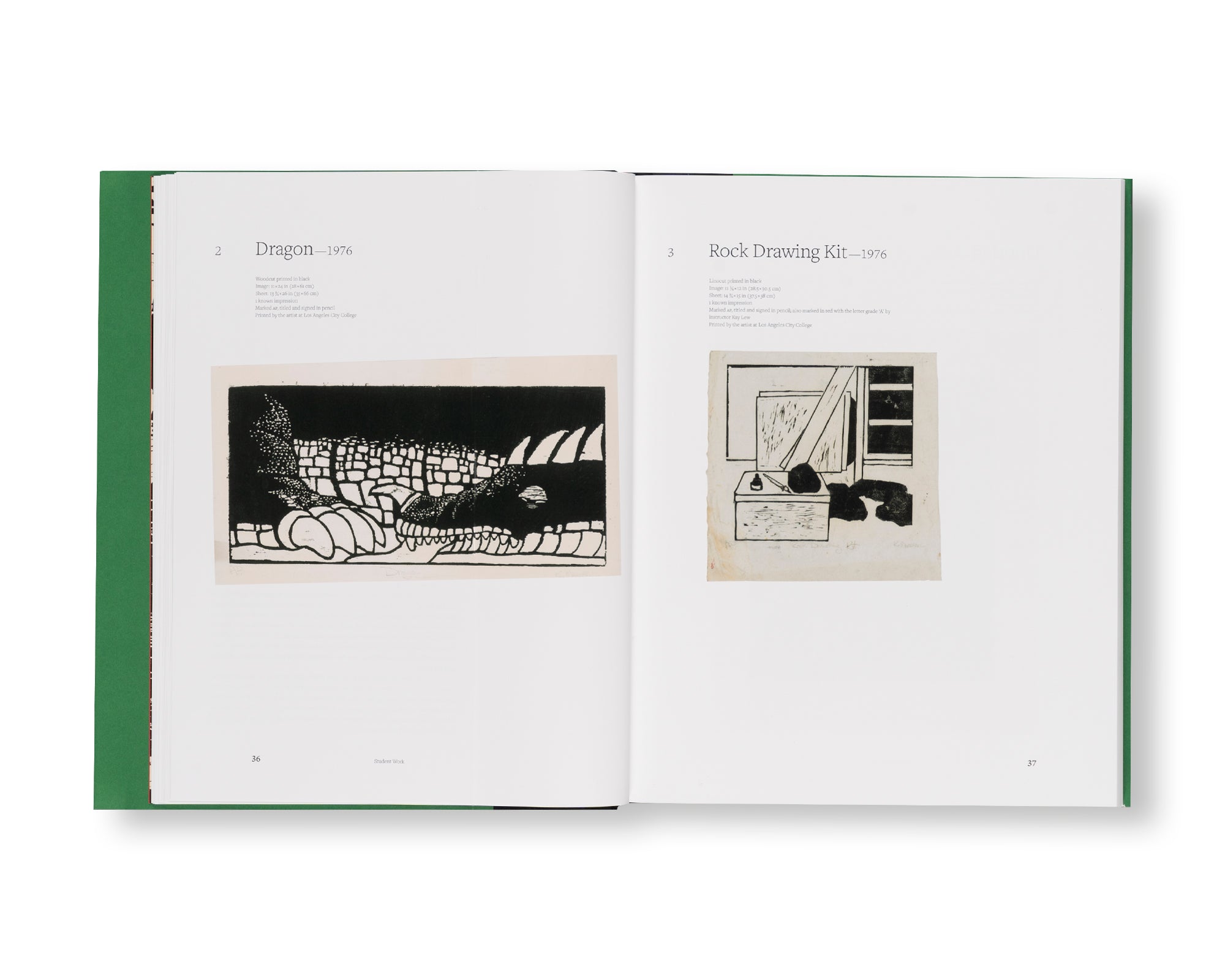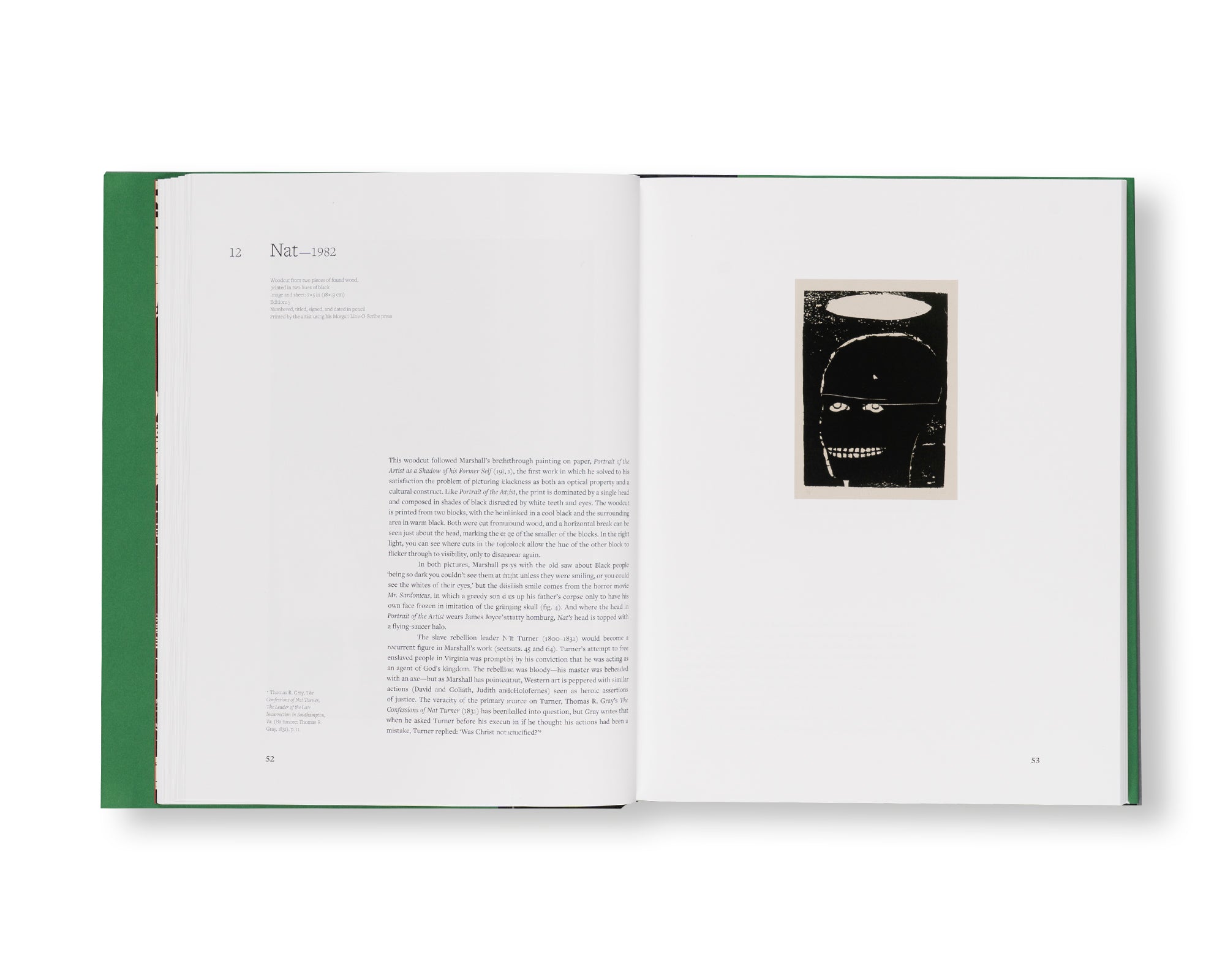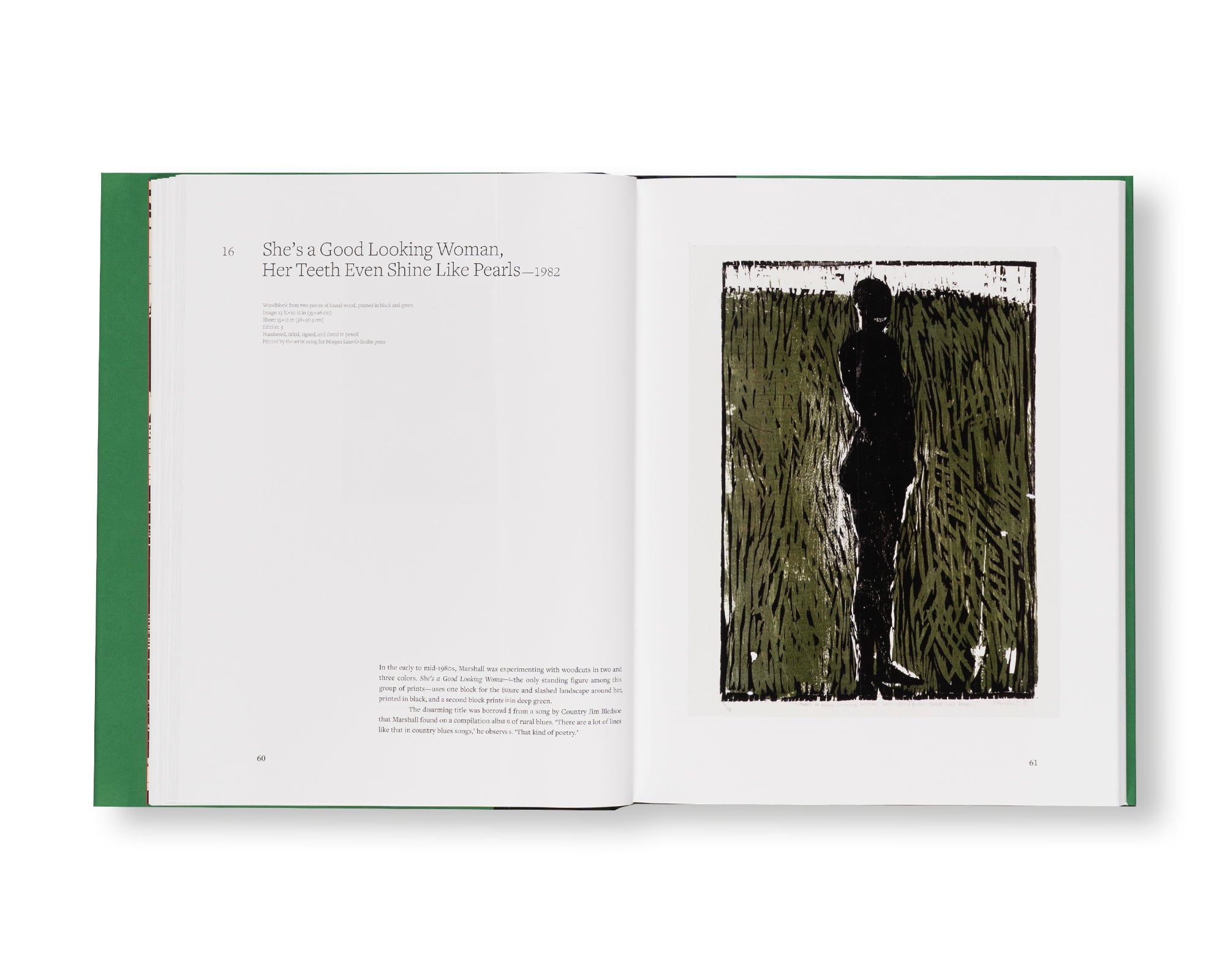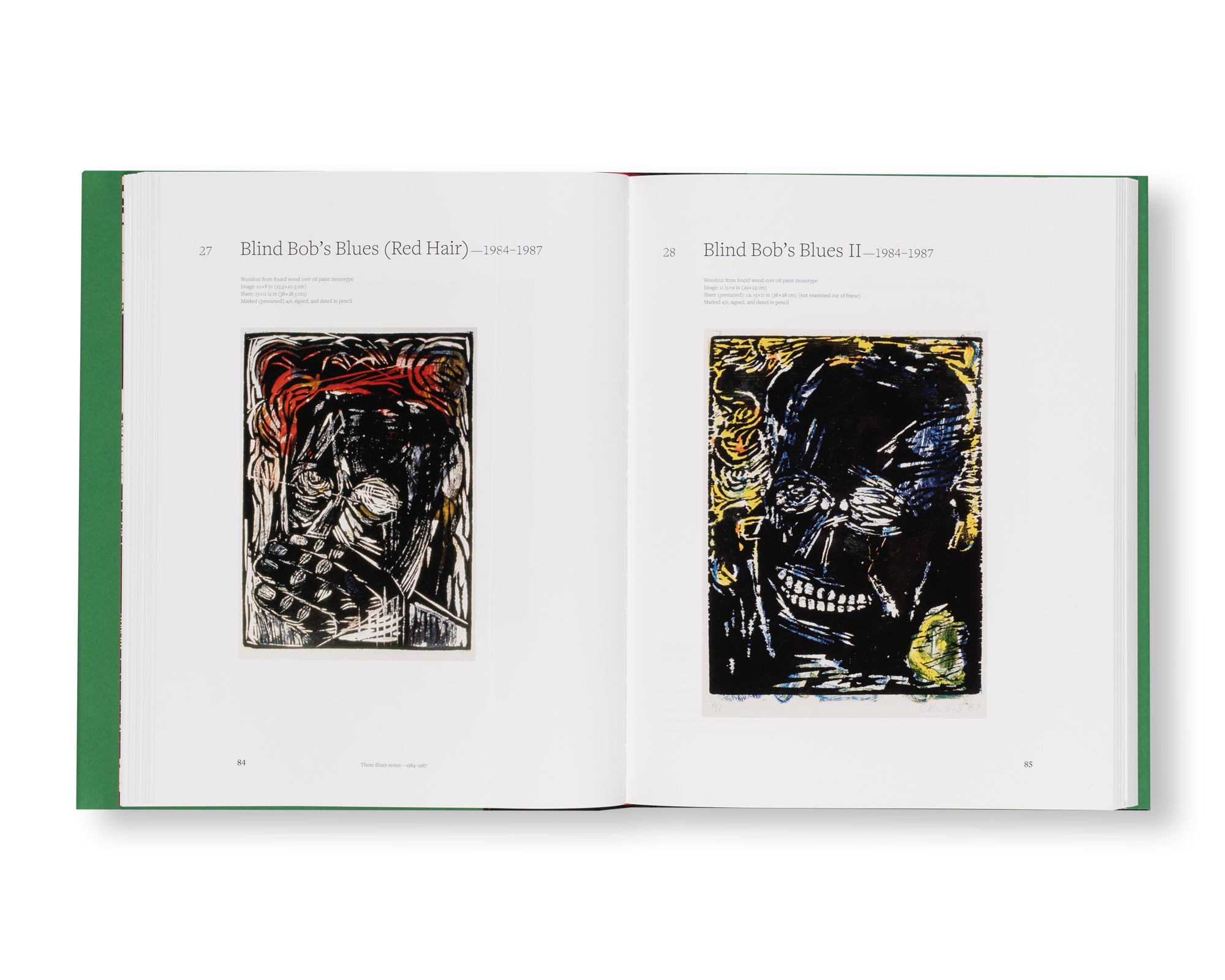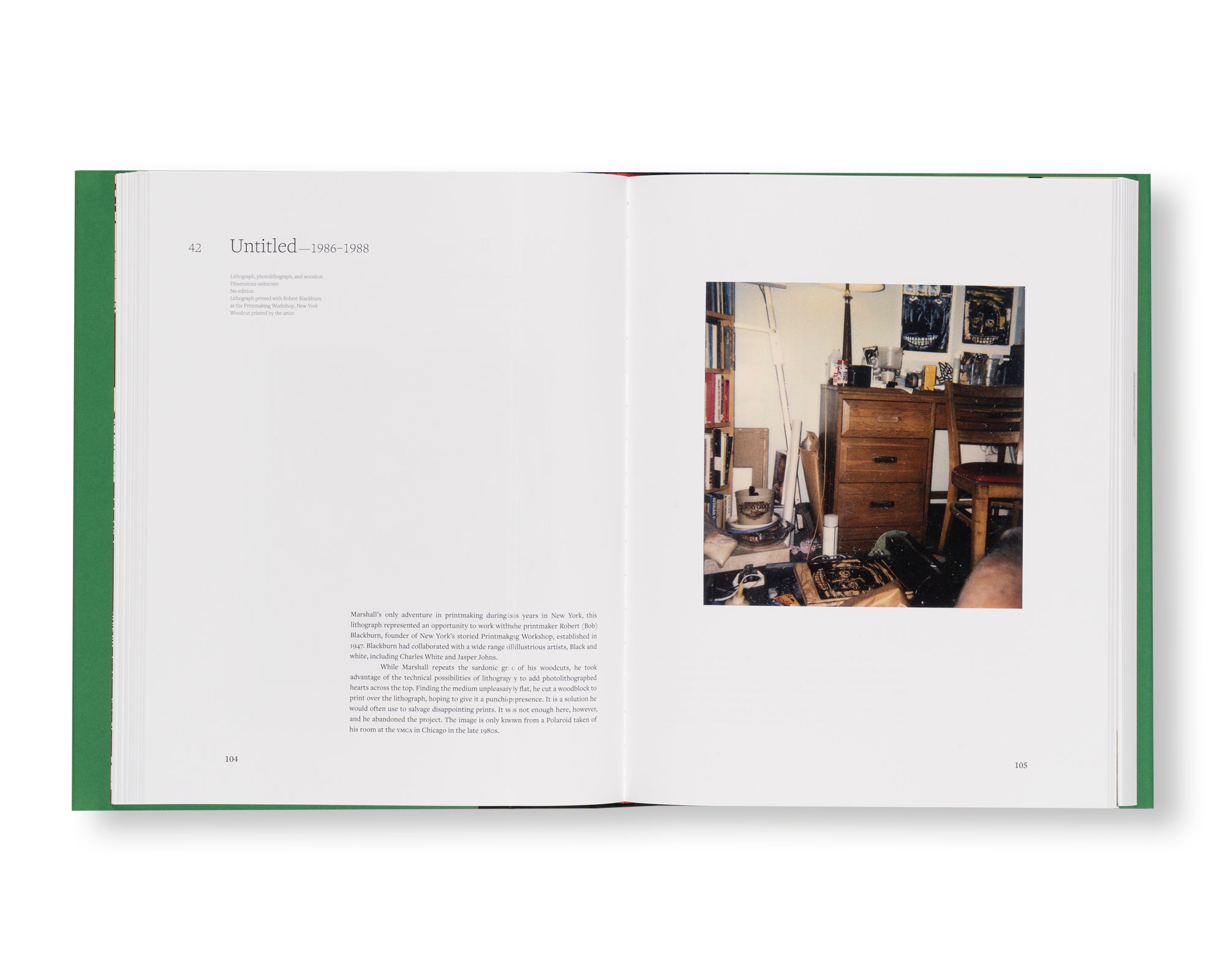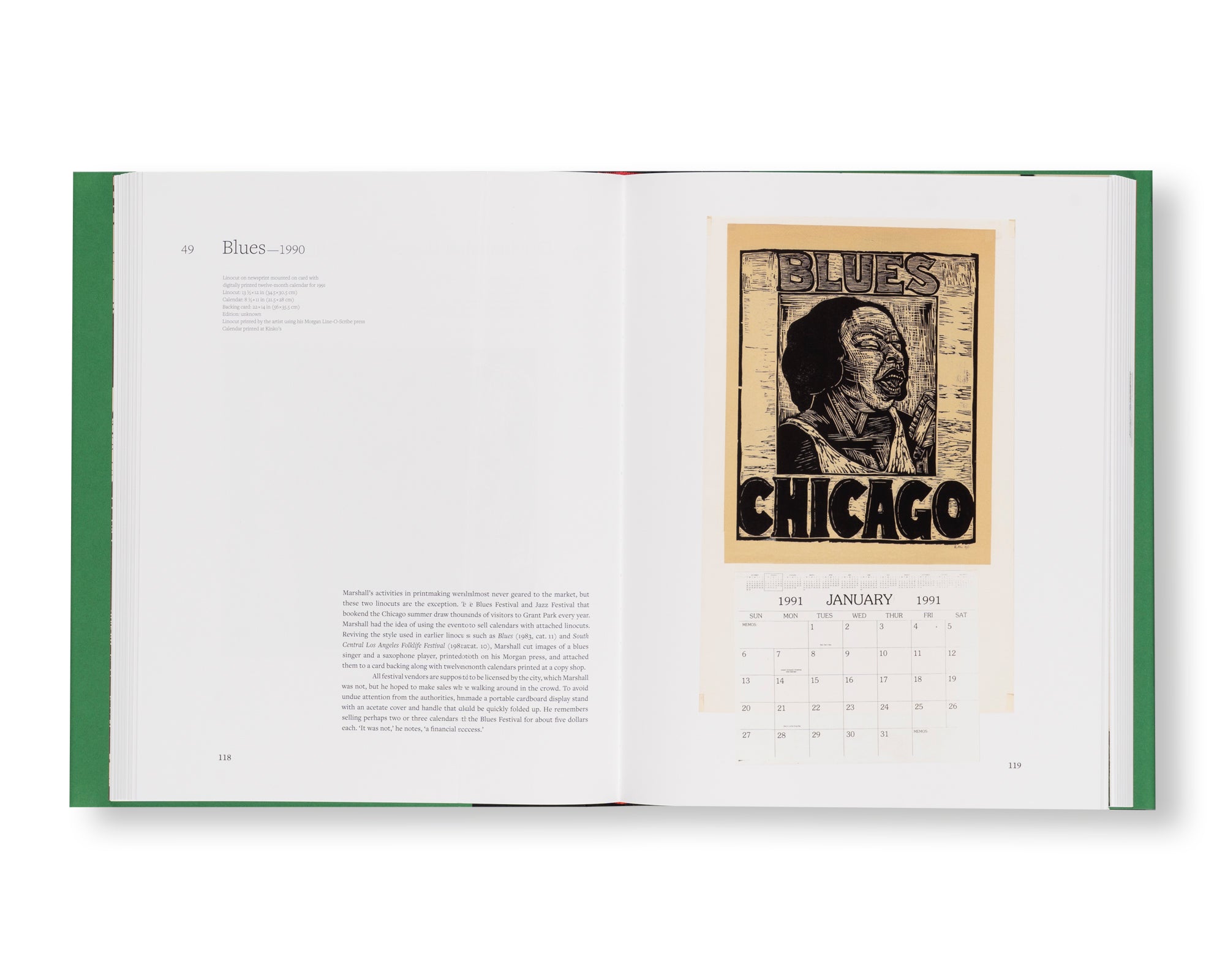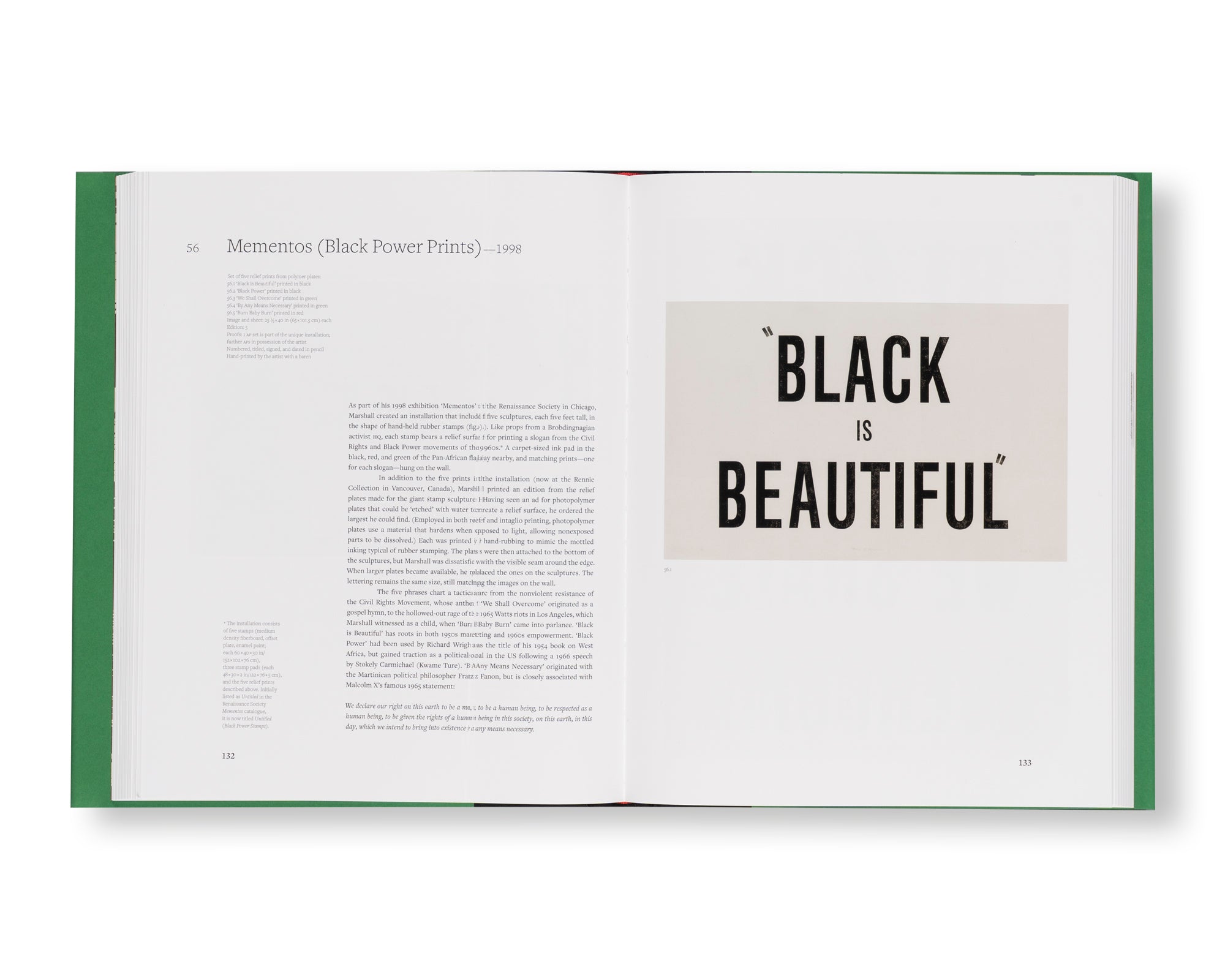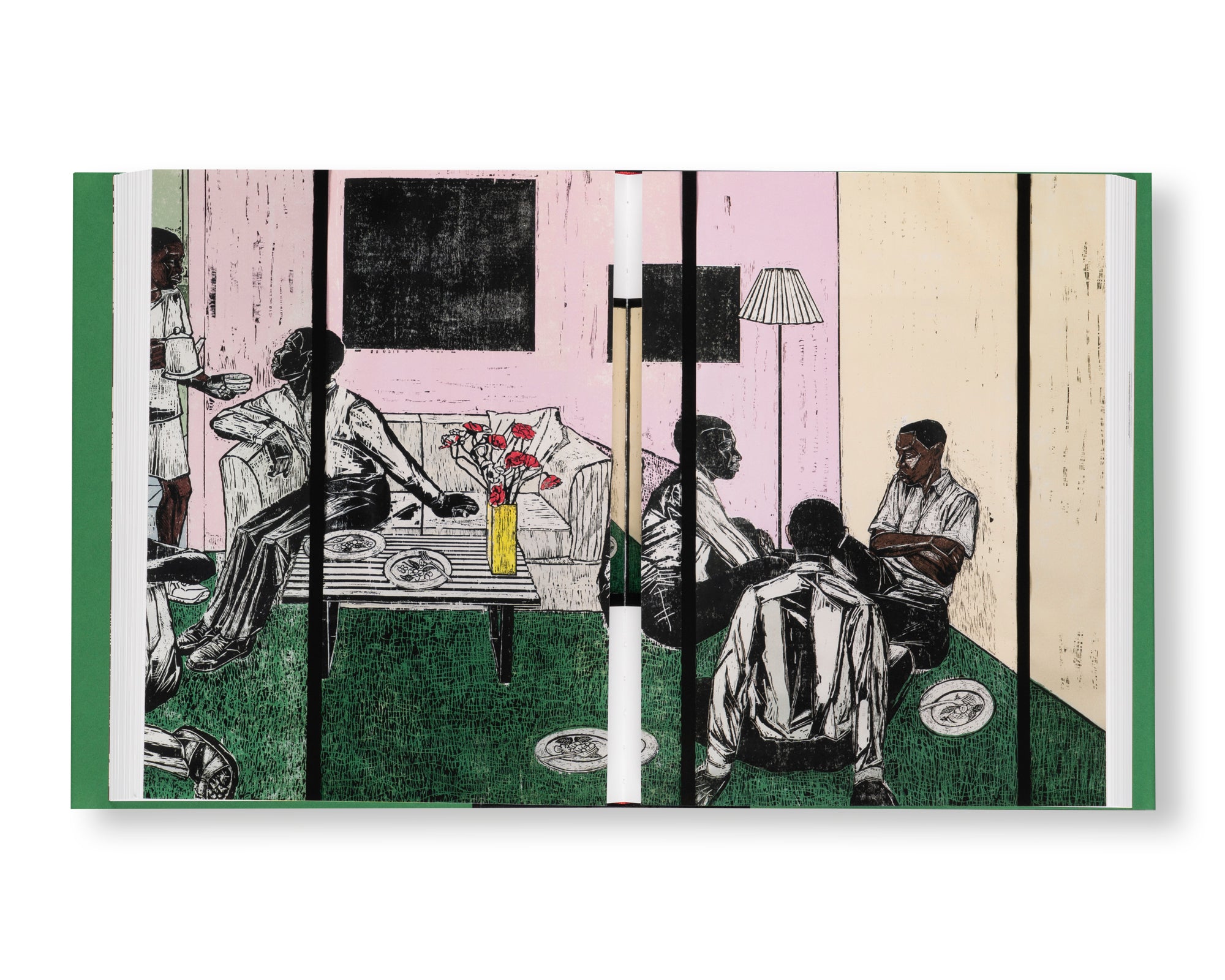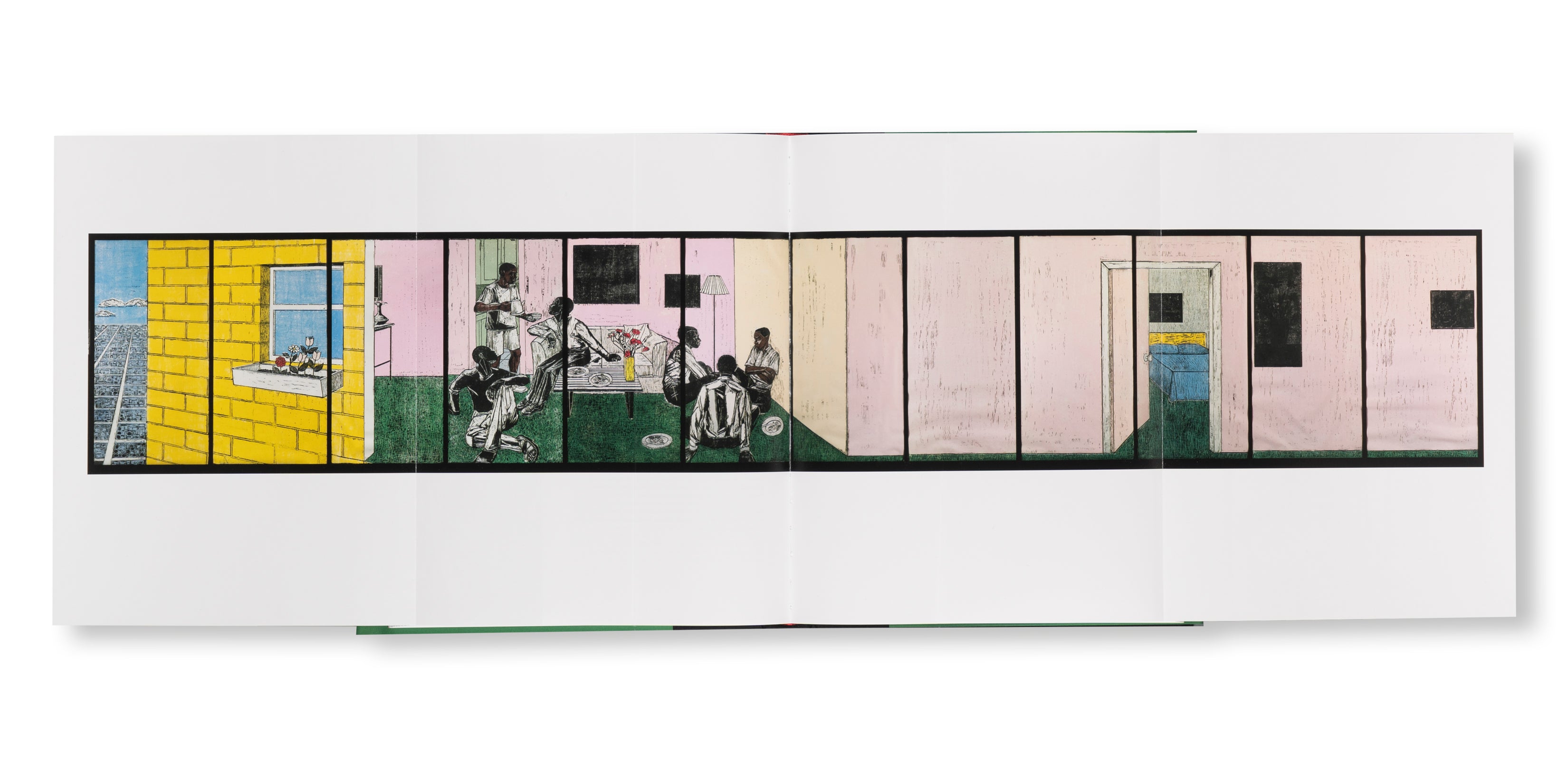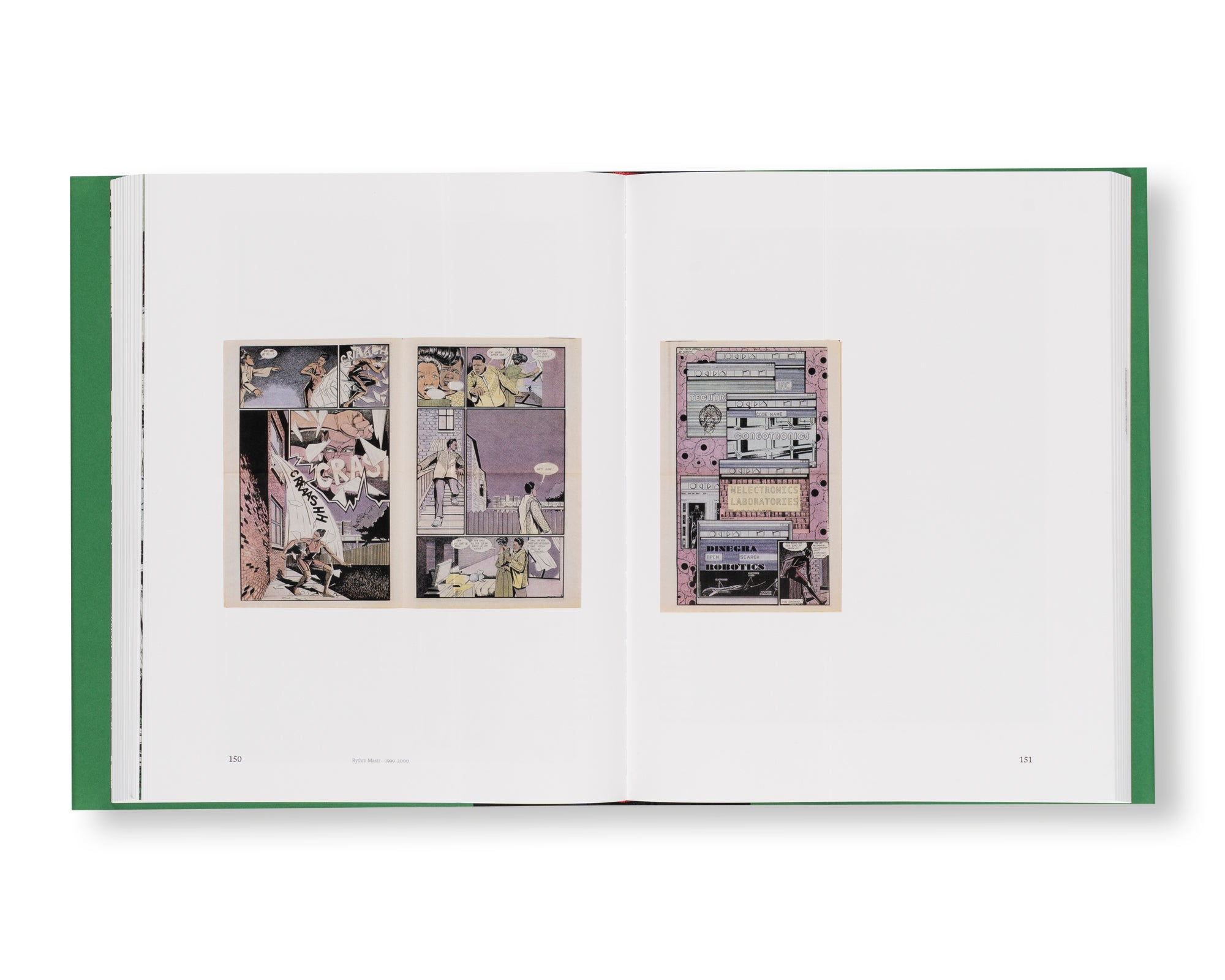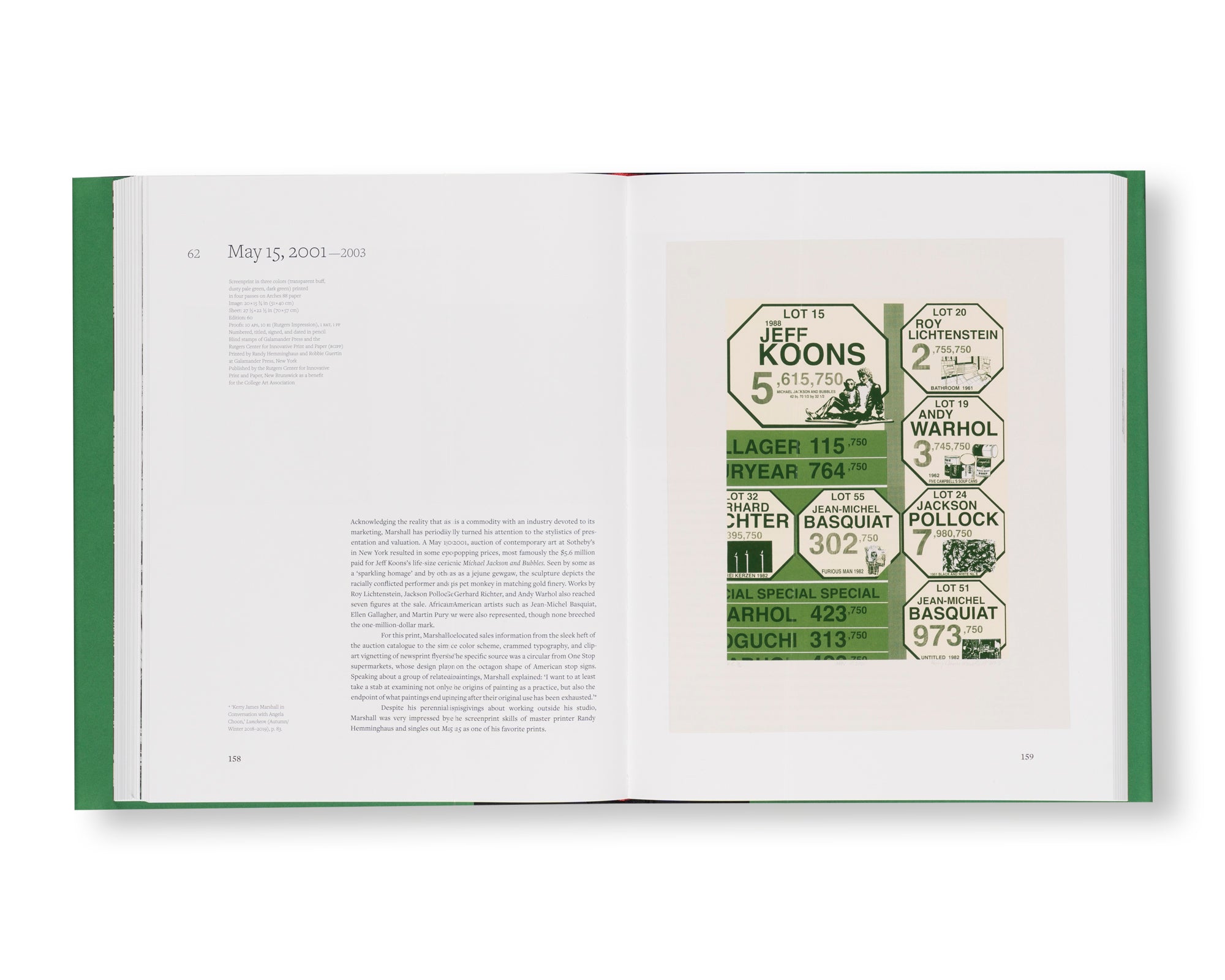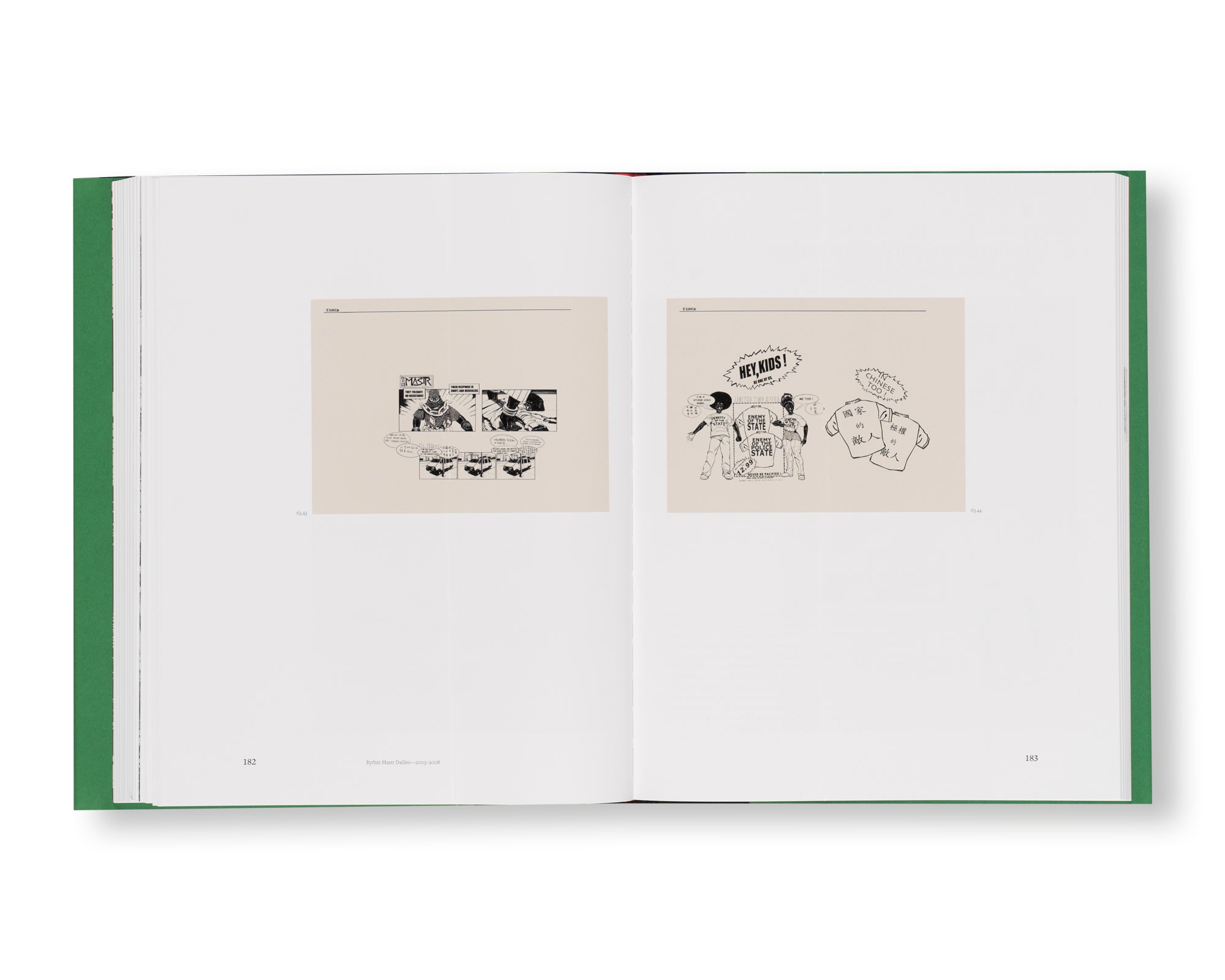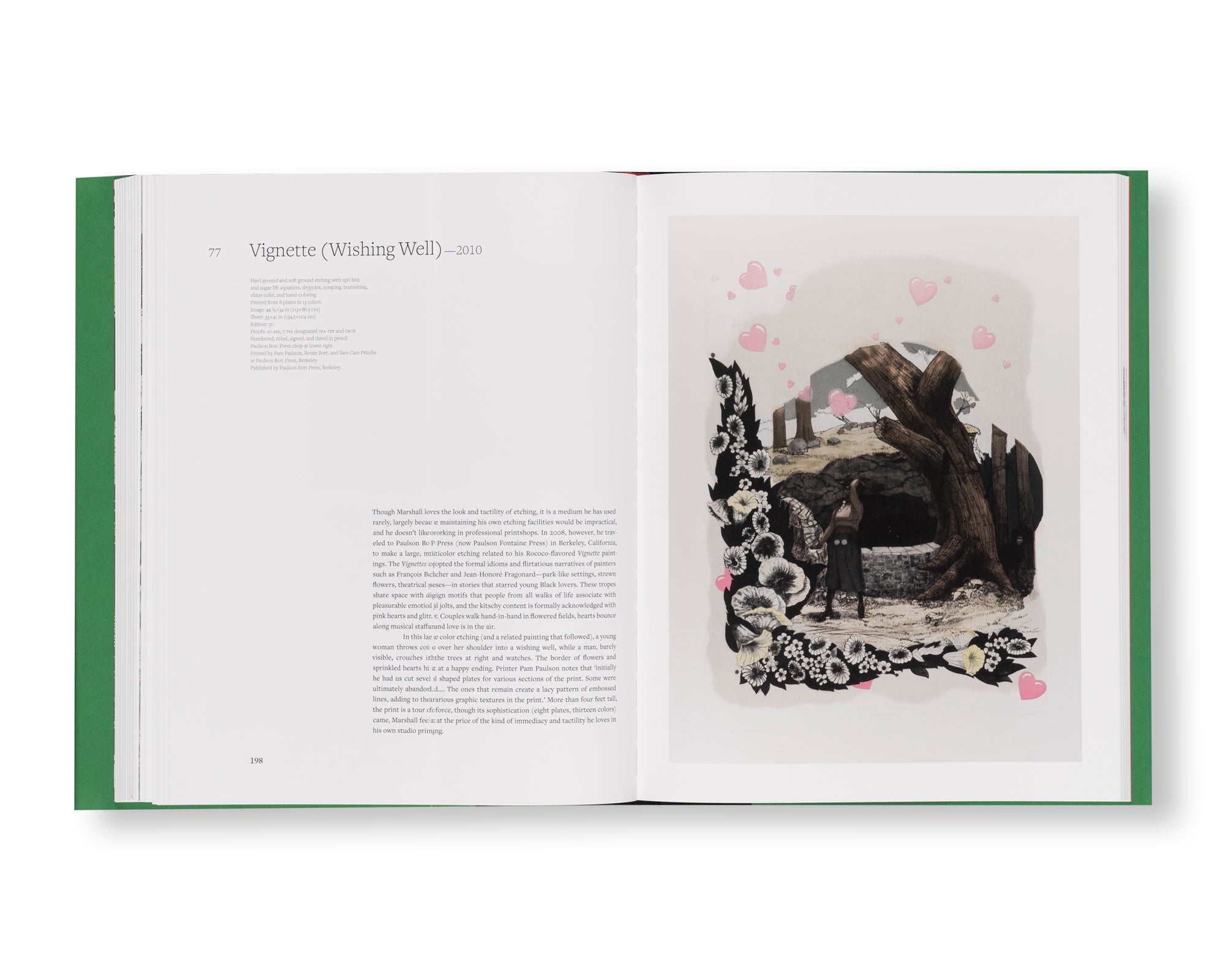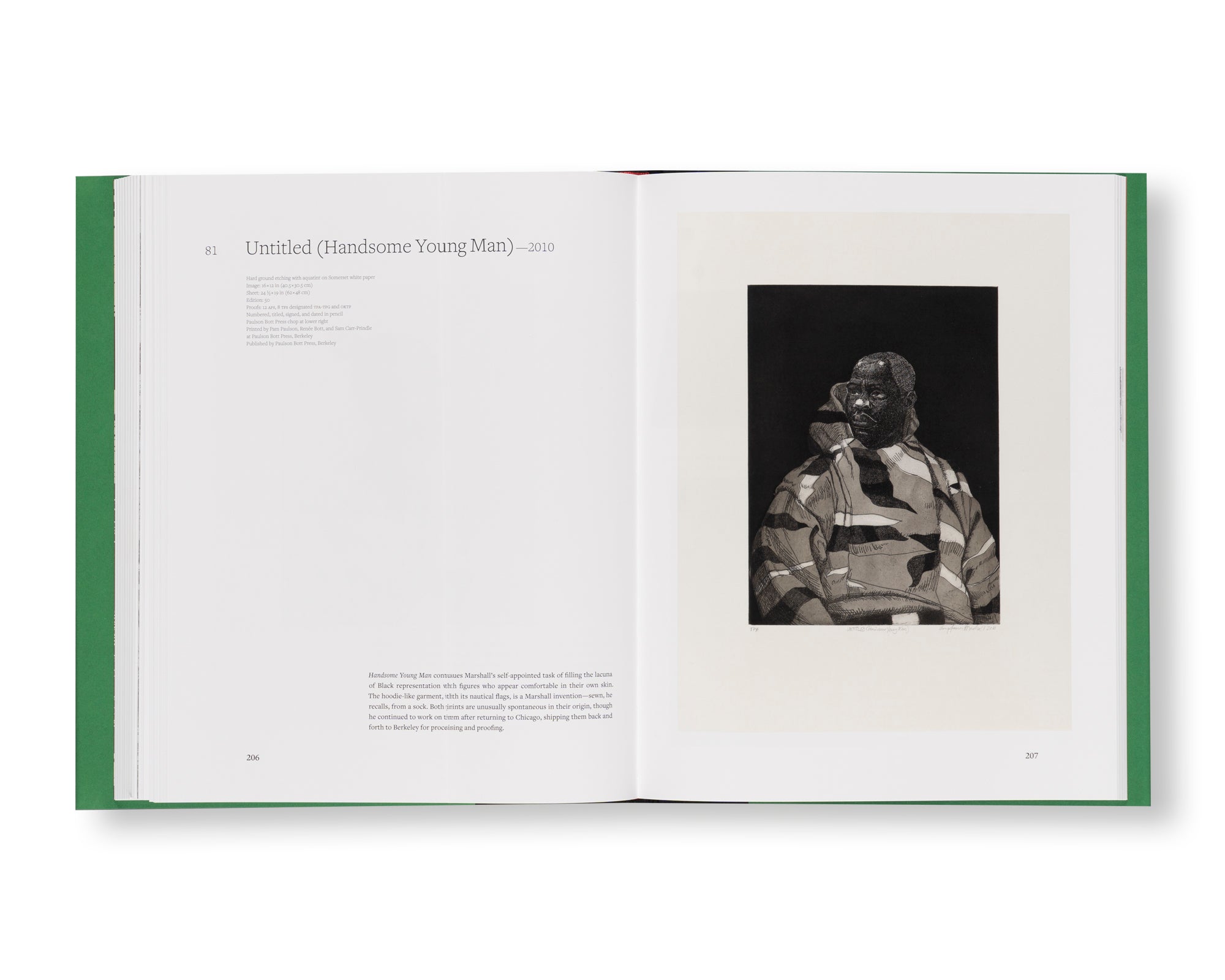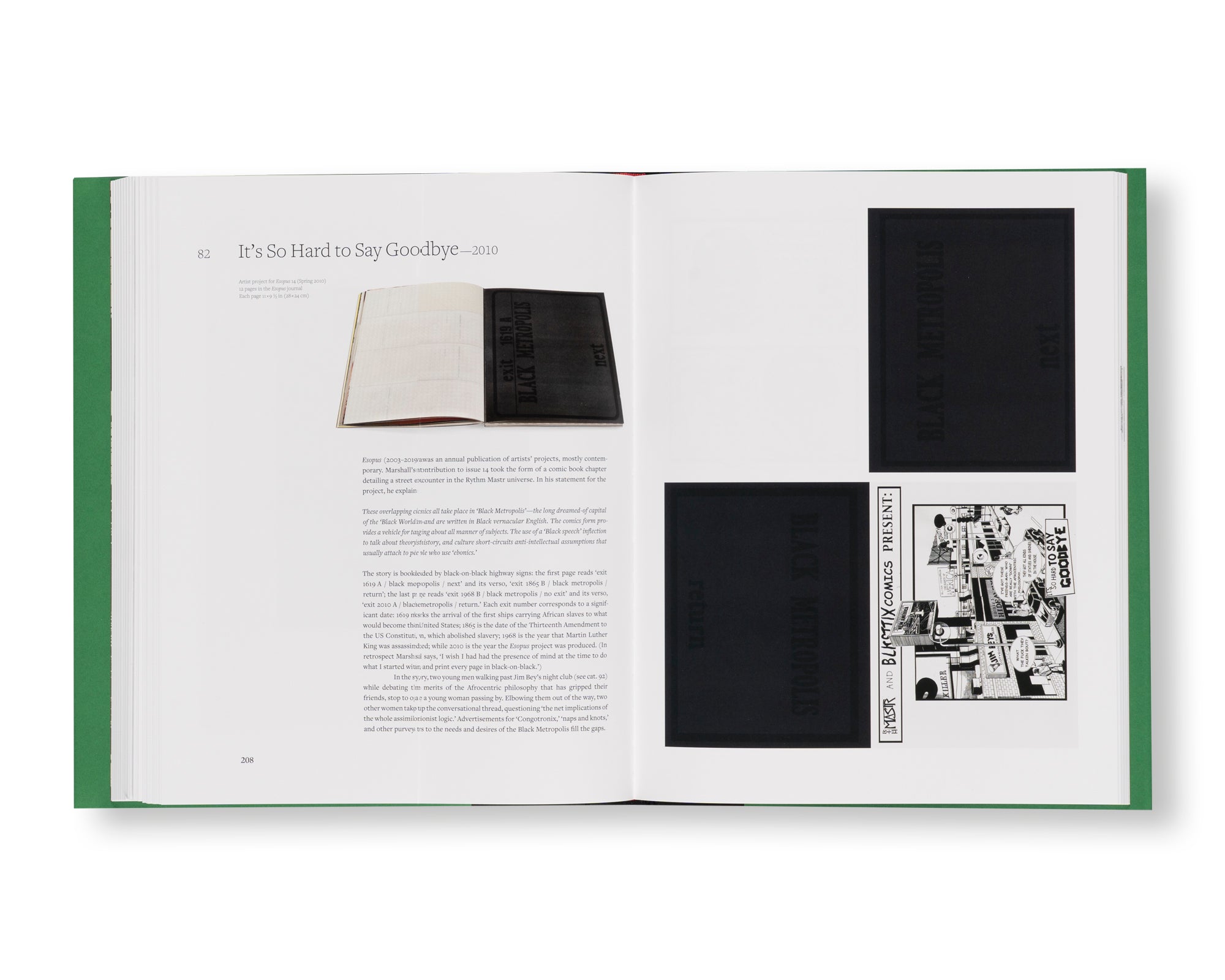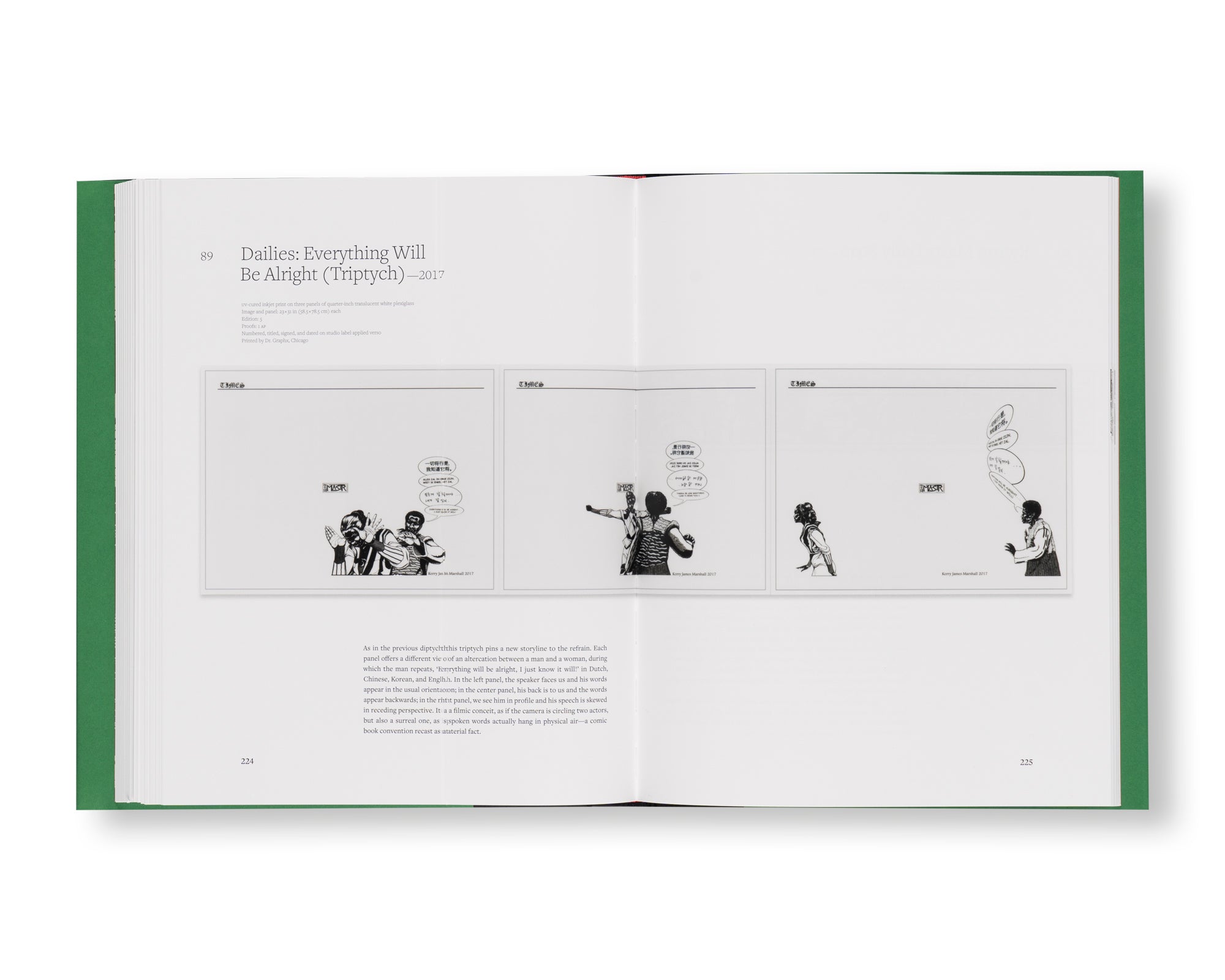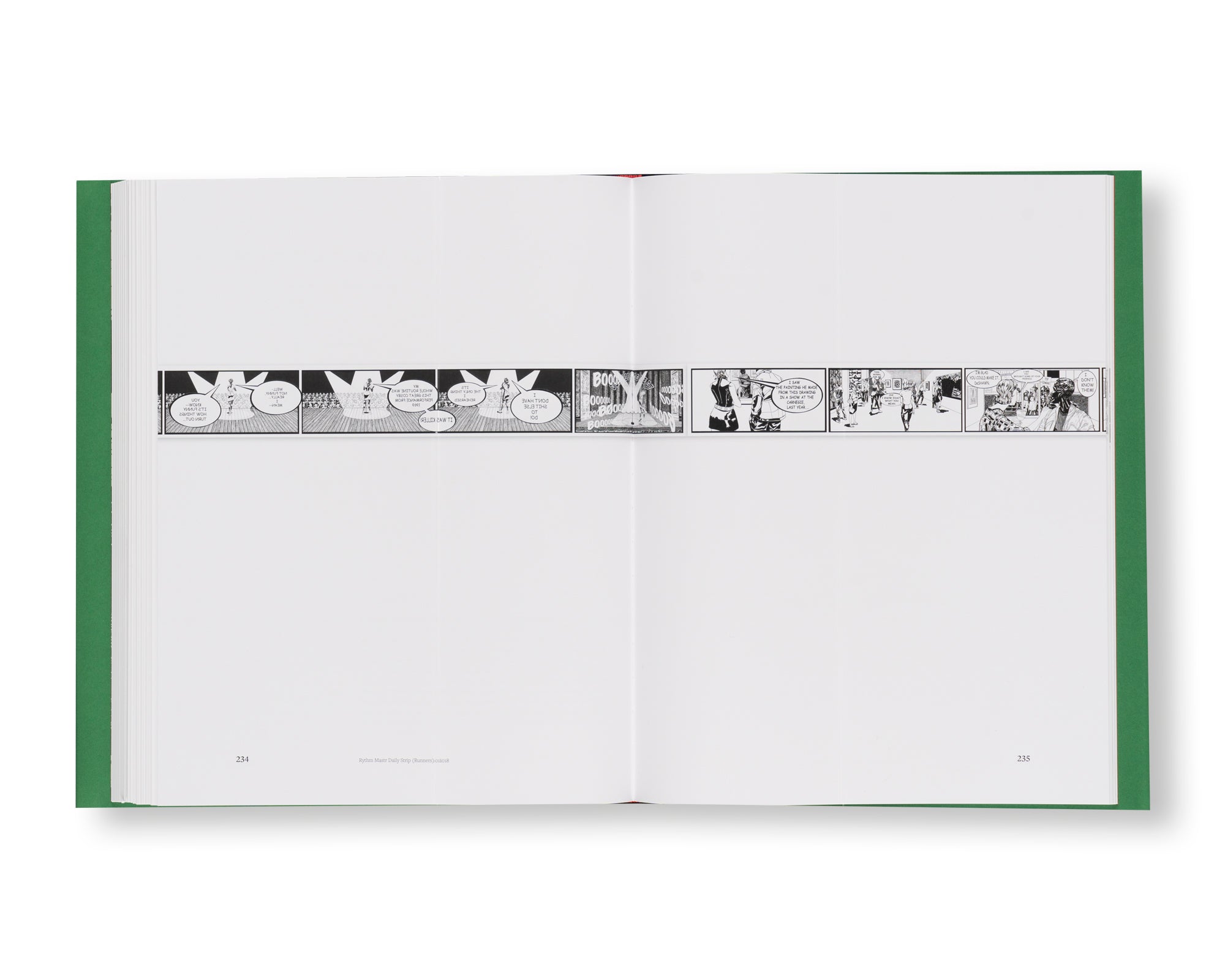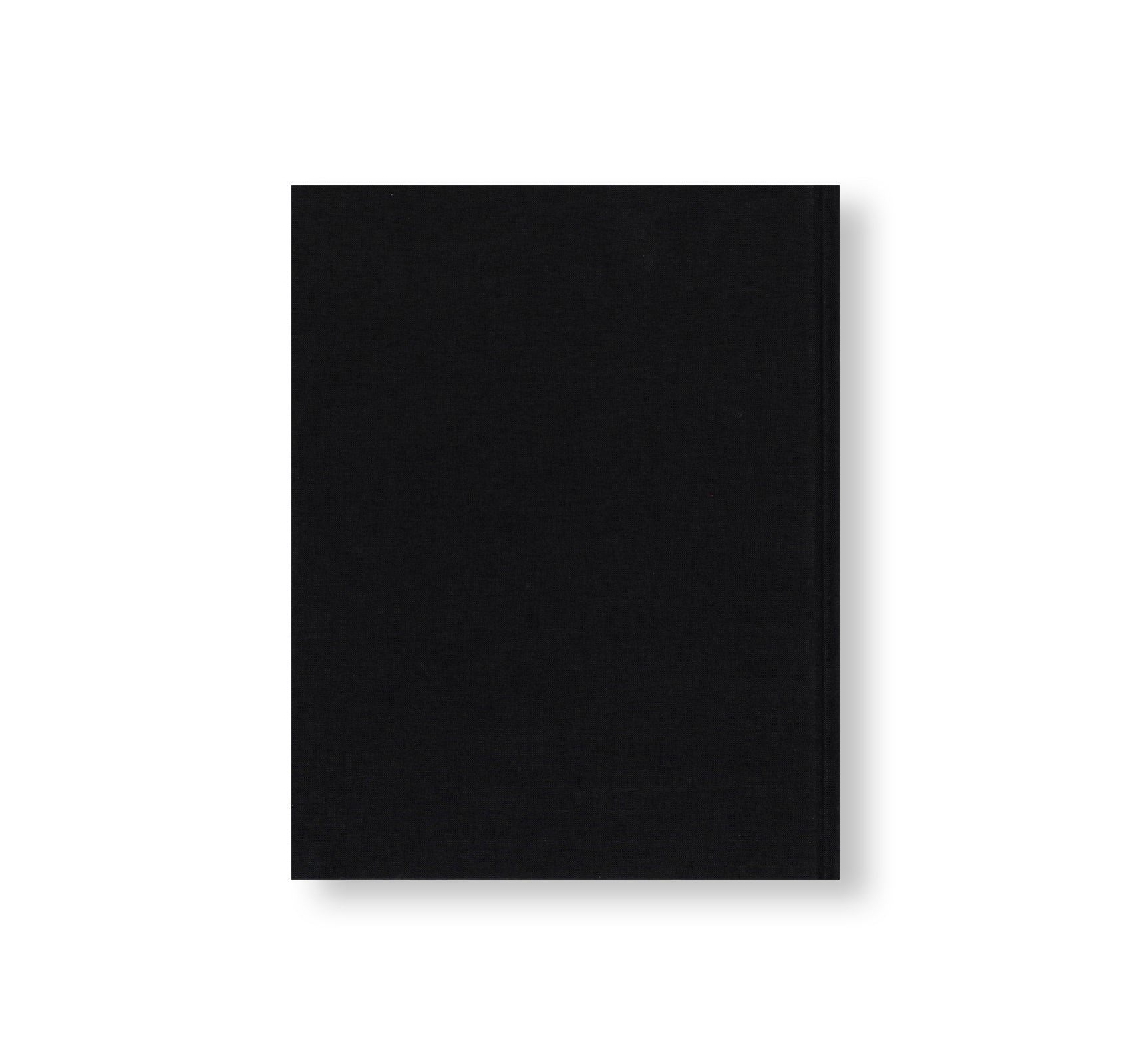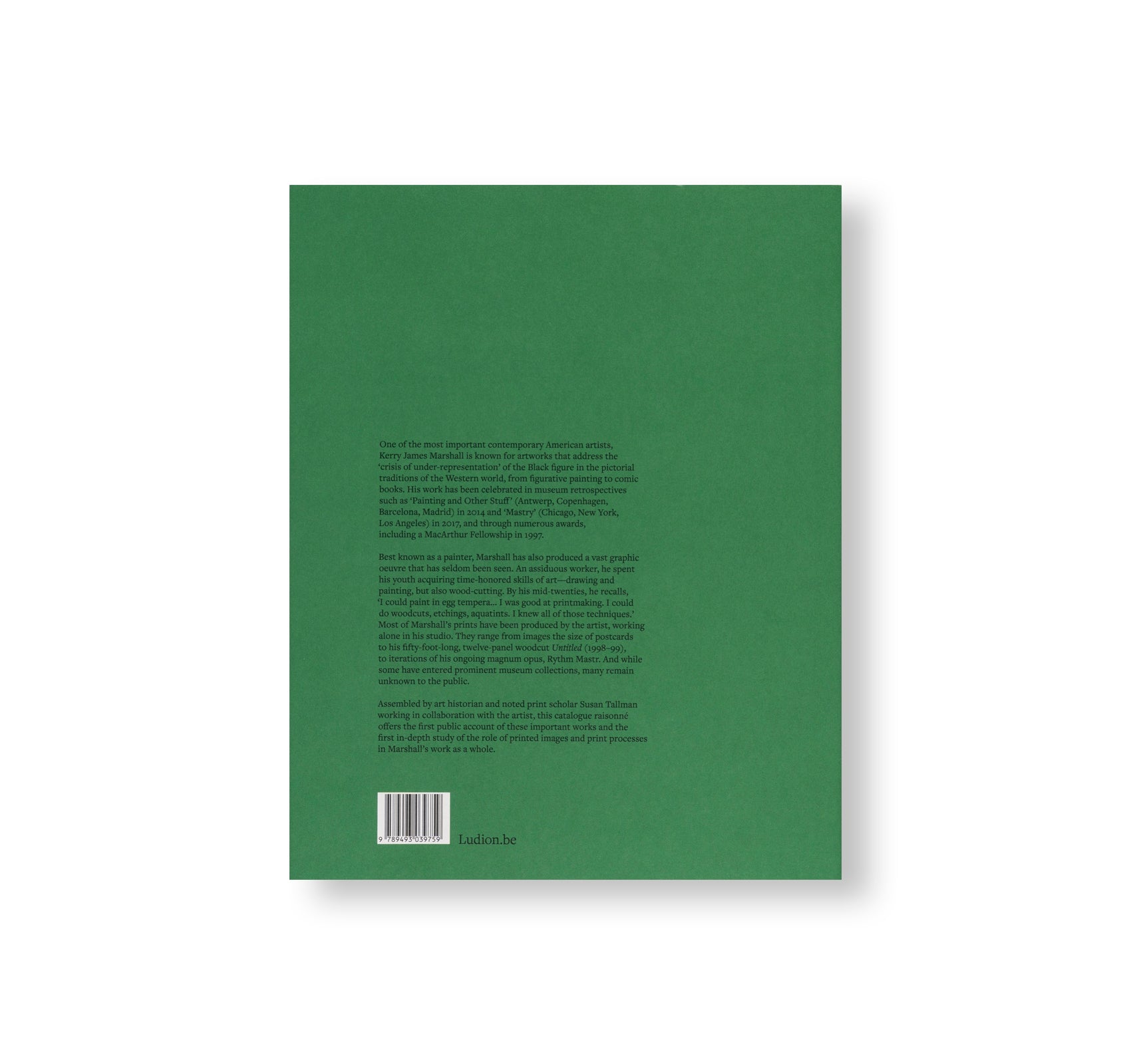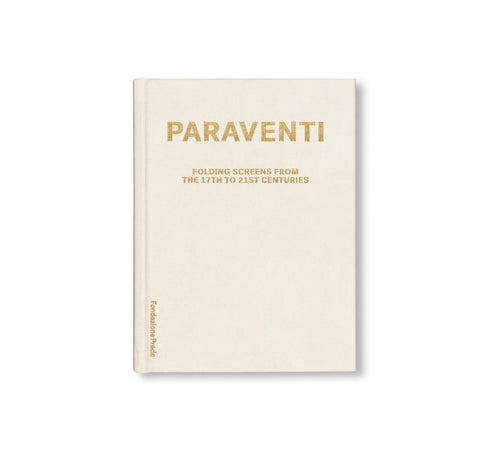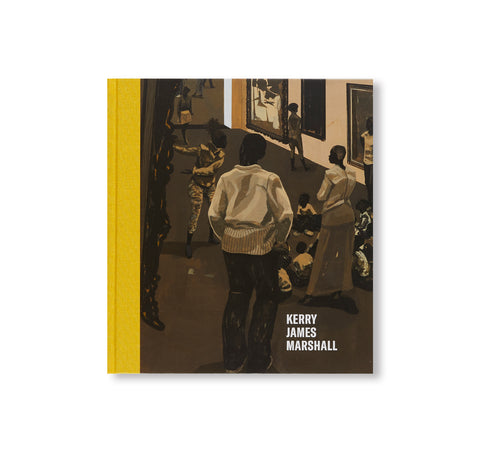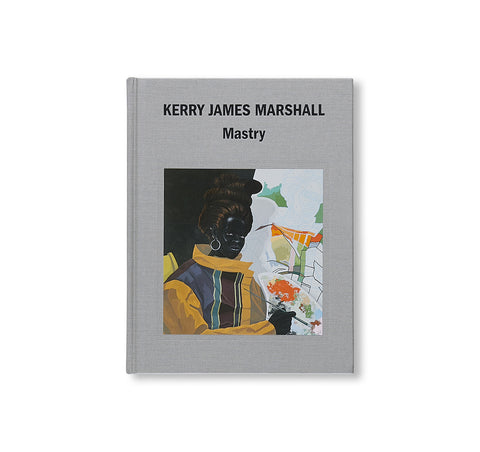THE COMPLETE PRINTS by Kerry James Marshall
アフリカ系アメリカ人アーティスト、ケリー・ジェームズ・マーシャル(Kerry James Marshall)の作品集。最も重要なアメリカ人現代アーティストの一人に数えられるマーシャルは、美術館からコミックブックに至るまで、西洋の絵画的伝統における黒人像の「軽視の危機」をテーマにした作品で知られる。その作品は、2014年の「Kerry James Marshall: Painting and Other Stuff」(アントワープ、コペンハーゲン、バルセロナ、マドリード)、2017年の「Mastry」(シカゴ、ニューヨーク、ロサンゼルス)などの美術館での大規模な回顧展や、1997年の「マッカーサーフェロー(MacArthur Fellowship)」を含む数々の賞を通じて、広く称賛されてきた。
画家として最もよく知られているマーシャルが、キャリアを通じて膨大なグラフィック作品を制作してきたことはあまり知られていない。めったに発表されず、ほとんど記録に残っていないためである。若い頃から制作に熱意と努力を注いできたマーシャルは、デッサンや絵画だけでなく、木版画や印刷といった伝統的な芸術の技術も身につけている。20代半ばまでには、「卵テンペラで絵が描けたし......版画も得意でした。木版画もエッチングもアクアチントもできた。版画も得意だった。こうしたテクニックを全て理解していたんだ」。
作者の版画作品は、プロの版画工房ではなく自らのアトリエで一人で制作されたものがほとんどである。作品はポストカードくらいのものから、長さ約15メートル、12パネルの木版画『Untitled』(1998-99年)、さらには代表作『Dailies 』シリーズの1つで2023年現在制作中の『Rythm Mastr』まで幅広い。著名な美術館に収蔵されているものもあるが、多くは個人コレクションや作家のアーカイヴにのみ存在し、一般には知られていない。
この作品集は、これらの重要な作品を初めて一般に紹介するとともに、マーシャルの作品全体における印刷されたイメージと印刷プロセスの役割についての初めての詳細な研究も収録されている。
One of the most important American contemporary artists, Kerry James Marshall is known for artworks that address the ‘crisis of under-representation’ of the black figure in the pictorial traditions of the Western world, from museums to comic books. His work has been widely celebrated in major museum retrospectives such as Kerry James Marshall: Painting and Other Stuff (Antwerp, Copenhagen, Barcelona, Madrid) in 2014 and Mastry (Chicago, New York, Los Angeles) in 2017, and through numerous awards, including a MacArthur Fellowship in 1997.
Best known as a painter, Marshall has throughout his career also produced a vast graphic oeuvre that has been seldom seen and rarely documented. An assiduous worker, he spent his youth acquiring time-honored skills of art – drawing and painting, but also wood engraving and printing. By his midtwenties, he recalls, ‘I could paint in egg tempera.… I was good at printmaking. I could do woodcuts, etchings, aquatints. I knew all of those techniques.’
Most of his prints have been produced not in professional print workshops, but by the artist, working alone in his studio. They range from images the size of postcards to his 50-foot-long, 12 panel woodcut Untitled (1998–99), to iterations of his ongoing magnum opus, Rythm Mastr. And while some have entered prominent museum collections, many exist only in private collections or the artist’s archive and are unknown to the public.
This catalog raisonné offers the first public account of these important works and the first in-depth study of the role of printed images and print processes in Marshall’s work as a whole.
